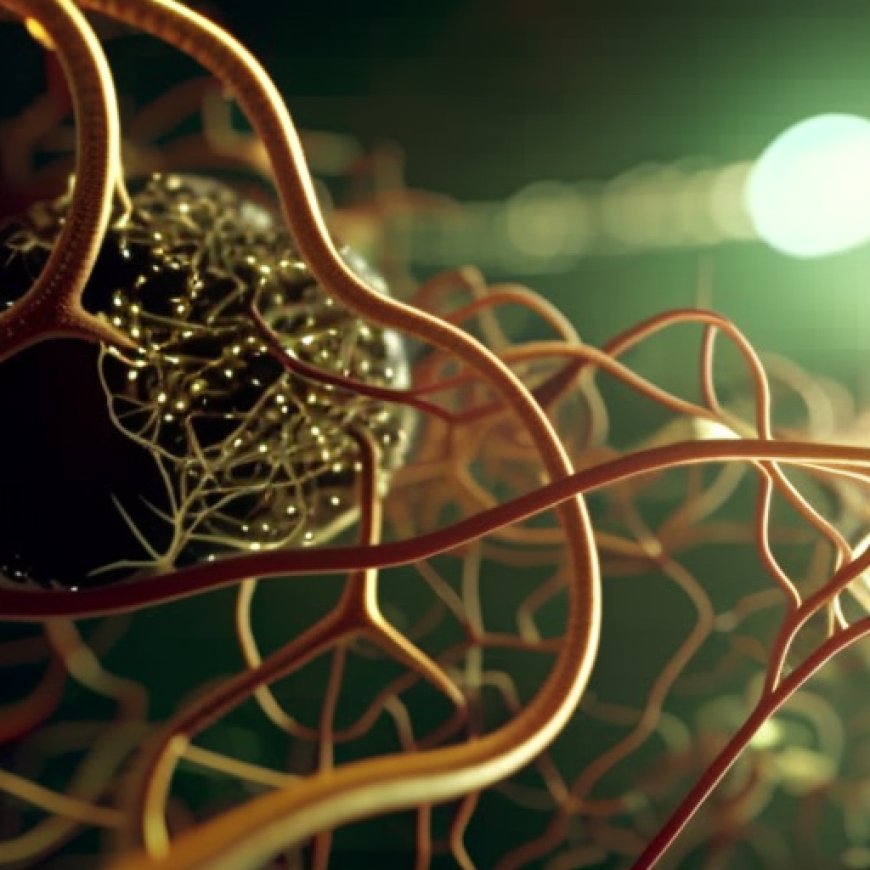Targeting Stress Neurons Could Curb Problem Alcohol Use – Neuroscience News
Targeting Stress Neurons Could Curb Problem Alcohol Use Neuroscience News


Summary:
Researchers made a significant discovery, identifying that inhibiting neurons related to stress responses may decrease alcohol consumption in individuals suffering from post-traumatic stress disorder (PTSD) and alcohol use disorder (AUD) simultaneously.
Their study used a rat model to demonstrate that reducing the activity of corticotropin-releasing factor (CRF) producing neurons in the central amygdala lessens alcohol intake without affecting trauma-related anxiety. This research not only elucidates the intricate link between stress, trauma, and alcohol use but also opens up new avenues for treating individuals with comorbid PTSD and AUD by potentially targeting specific neural pathways involved in stress-induced drinking behaviors.
Key Facts:
- Comorbidity of PTSD and AUD: Individuals with PTSD are significantly more likely to develop AUD, underscoring the need to understand and treat these conditions together.
- CRF’s Role in Alcohol Consumption: The study highlights CRF, a neuropeptide in the central amygdala, as a critical factor in regulating alcohol use in response to stress, without directly influencing anxiety levels.
- Future Directions for Treatment: By identifying the role of CRF-producing neurons in alcohol consumption among those with PTSD and AUD, the research suggests targeting these neurons could be a strategy for developing novel therapeutic interventions.
Source:
Scripps Research Institute
Neuroscientists at Scripps Research have found that inhibiting neurons involved in the body’s stress response may reduce alcohol consumption in people who have both post-traumatic stress disorder (PTSD) and alcohol use disorder (AUD)—even if they still experience trauma-related anxiety.
The findings were published March 21 in Molecular Psychiatry.
These discoveries are helping untangle the complex role that stress and trauma play in neurological disorders like PTSD and AUD, while also informing the development of new treatment options for people who experience both these conditions simultaneously.
Image:

“Traumatic experiences in life can increase vulnerability to alcohol drinking and exacerbate symptoms of depression and anxiety,” says senior author Marisa Roberto, PhD, the Schimmel Family Endowed Chair and vice chair of the Department of Molecular Medicine.
“Alcohol is often used as a coping strategy to blur trauma-associated memories and diminish negative emotional states.”
PTSD and AUD are often comorbid, so understanding their underlying neurological mechanisms in tandem is crucial. About 6% of the U.S. population will develop PTSD at some point, according to the U.S. Department of Veterans Affairs, and people with PTSD have a 30% lifetime prevalence of AUD. However, few pharmaceutical therapies exist to treat the disorders together.
Roberto’s team previously created a model in which rats develop symptoms similar to what people with comorbid PTSD and AUD experience: aggression, anxiety, hyperarousal, disturbed sleep and increased alcohol consumption. In this new study, they compared these rats with those that did not exhibit anxiety-like behaviors by giving each group access to both alcohol and water.
Compared with unstressed rats, those that were stressed exhibited higher levels of peripheral stress hormones, and various genes in the central amygdala, including one that encodes for the neuropeptide known as corticotropin-releasing factor (CRF), were also shown to be altered in stressed rats.
CRF exists in the central amygdala, a part of the brain that’s altered by excessive drinking and is responsible for processing fear. Stress causes neural release of CRF, which plays a key role in regulating physiological
SDGs, Targets, and Indicators
1. SDGs Addressed or Connected to the Issues Highlighted in the Article
- SDG 3: Good Health and Well-being
- SDG 5: Gender Equality
- SDG 16: Peace, Justice, and Strong Institutions
2. Specific Targets Under Those SDGs Based on the Article’s Content
- SDG 3.5: Strengthen the prevention and treatment of substance abuse, including narcotic drug abuse and harmful use of alcohol
- SDG 5.2: Eliminate all forms of violence against all women and girls in the public and private spheres, including trafficking and sexual and other types of exploitation
- SDG 16.1: Significantly reduce all forms of violence and related death rates everywhere
3. Indicators Mentioned or Implied in the Article to Measure Progress towards the Identified Targets
- Indicator for SDG 3.5: Alcohol consumption levels among individuals with comorbid PTSD and AUD
- Indicator for SDG 5.2: Prevalence of violence against women with comorbid PTSD and AUD
- Indicator for SDG 16.1: Reduction in trauma-related behaviors and symptoms among individuals with comorbid PTSD and AUD
Table: SDGs, Targets, and Indicators
| SDGs | Targets | Indicators |
|---|---|---|
| SDG 3: Good Health and Well-being | Target 3.5: Strengthen the prevention and treatment of substance abuse, including narcotic drug abuse and harmful use of alcohol | Indicator: Alcohol consumption levels among individuals with comorbid PTSD and AUD |
| SDG 5: Gender Equality | Target 5.2: Eliminate all forms of violence against all women and girls in the public and private spheres, including trafficking and sexual and other types of exploitation | Indicator: Prevalence of violence against women with comorbid PTSD and AUD |
| SDG 16: Peace, Justice, and Strong Institutions | Target 16.1: Significantly reduce all forms of violence and related death rates everywhere | Indicator: Reduction in trauma-related behaviors and symptoms among individuals with comorbid PTSD and AUD |
Note: The table presents the identified SDGs, targets, and indicators based on the analysis of the article. The indicators are derived from the information provided in the article, which highlights the connection between comorbid PTSD and AUD, alcohol consumption levels, violence against women, and trauma-related behaviors.
Behold! This splendid article springs forth from the wellspring of knowledge, shaped by a wondrous proprietary AI technology that delved into a vast ocean of data, illuminating the path towards the Sustainable Development Goals. Remember that all rights are reserved by SDG Investors LLC, empowering us to champion progress together.
Source: neurosciencenews.com

Join us, as fellow seekers of change, on a transformative journey at https://sdgtalks.ai/welcome, where you can become a member and actively contribute to shaping a brighter future.







